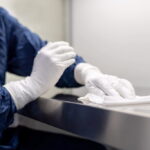Enhancing patient experience has emerged as a pivotal goal for medical practices worldwide. Beyond proficient medical care, patients increasingly expect a holistic journey that encompasses convenience, communication, and compassion. Every interaction counts in shaping how patients perceive their care.
Keep reading to learn how your medical practice can improve the patient experience.
1. Technology for Improved Engagement
The digital age brings with it a wealth of tools designed to enhance the healthcare journey. Among the most impactful are remote patient monitoring services, which allow healthcare providers to keep track of a patient’s vital signs and health metrics even if they’re miles apart. This not only provides professionals with a continuous stream of data but also gives patients peace of mind, knowing they’re being looked after.
Another transformative technology is telemedicine platforms, enabling consultations and follow-ups without the need to be physically present, catering to those with mobility issues or who live in remote locations. Additionally, AI-powered chatbots can offer instant responses to patient queries, guiding them through administrative processes or even offering preliminary medical advice. By integrating such technologies, medical practices can foster deeper patient engagement and cater to their evolving expectations.
2. Personalized Care Through Data Utilization
Harnessing the rich pool of health data gathered during patient encounters can redefine the care experience. Dive deep into this data, and medical practices can uncover nuanced details about individual health trajectories and habits.
By adjusting medical strategies based on these insights, a truly personalized approach emerges. Yet personalization isn’t solely about medical interventions; it’s also about recognizing and valuing the human aspect of healthcare. Remembering a patient’s comfort preferences, using their chosen name, or jointly deciding on a treatment path can create an atmosphere of trust and respect. Such gestures might seem simple, but they resonate deeply, bridging the gap between clinical procedures and genuine human connection.
3. Enhanced Communication and Education
Clear, straightforward communication plays a pivotal role in shaping a patient’s experience. The maze of medical terminology can be daunting, often leaving patients feeling overwhelmed or out of the loop. By opting for easy-to-understand explanations, medical practices can demystify complex concepts for their patients. Creating an environment where questions are welcomed can dispel fears and build trust.
Furthermore, equipping patients with accessible educational tools, whether through hands-on workshops or digital content like videos and short articles, boosts their confidence in managing their health. In the end, a knowledgeable patient is an engaged one, and that fosters a thriving healthcare relationship.
4. Streamlined Administrative Processes
Excessive wait durations, convoluted billing protocols, and the challenges of administrative procedures have the potential to diminish the quality of the patient experience. Therefore, it becomes imperative to optimize administrative workflows to establish a journey that is smooth and devoid of unnecessary complexities for patients.
By introducing streamlined and efficient appointment scheduling mechanisms, curbing wait times, and providing adaptable payment choices, medical practices effectively showcase their dedication to valuing both the time and financial well-being of their patients. This focused attention on addressing non-medical requisites significantly contributes to an elevation in overall patient contentment.
5. The Cultivation of a Comfortable Environment
The physical and emotional atmosphere of a medical facility plays a significant role in patient perception. A well-designed, calming environment can instantly put patients at ease, reducing the stress often associated with medical visits. Soft lighting, serene artwork, and comfortable seating can transform waiting areas into relaxation zones.
In treatment rooms, a focus on cleanliness and organization, paired with subtle touches of warmth, can make all the difference. Staff training that emphasizes empathy, active listening, and soft skills is equally vital. When both the surroundings and the staff exude comfort and care, the overall patient experience is significantly better.
Insights and Takeaways
Enhancing the patient’s experience requires a multifaceted approach. Each strategy, from harnessing data for personalized care to cultivating a comfortable environment, directly influences the patient’s perception and satisfaction.
By prioritizing clear communication and patient education, medical practices can foster deeper trust and understanding. Streamlining administrative tasks also shows patients their time is valued and that every minute counts. Above all, it’s the commitment to continual improvement and patient-centricity that will set a practice apart in today’s healthcare landscape.
Read Also
- Management Reinforcement for Healthcare Providers in a Shifting SystemHealthcare is changing faster than ever. So, providers are feeling the pressure to keep up. New technology, changing patient needs, and constant rule updates make it tough for managers to stay on top. Strong leadership helps teams work better, give great care, and stay happy in their jobs. Here’s how healthcare leaders can strengthen their… Read more: Management Reinforcement for Healthcare Providers in a Shifting System
- Why Effective Disinfection Remains the Foundation of Public HealthFrom hospitals and schools to transport hubs and food production sites, disinfection is central to breaking the chain of infection and protecting community health. The COVID-19 pandemic highlighted how crucial surface hygiene and environmental control are in reducing the spread of harmful microorganisms. Yet, beyond emergency response, routine and validated disinfection practices remain the cornerstone… Read more: Why Effective Disinfection Remains the Foundation of Public Health
- How to Navigate Your Medical Assistant Career PathBecoming a medical assistant can feel both exciting and a little stressful. This job lets you work closely with doctors and other healthcare workers to help patients. But with so many different paths to take, it can be hard to know where to start or how to plan your career. Wouldn’t it be nice to… Read more: How to Navigate Your Medical Assistant Career Path
- Benefits of Enrolling in Botox Training CoursesMany people want to enhance their skills in the beauty field, and one way to do that is through Botox training. With the rising popularity of Botox, enrolling in training courses can set you on a path to a rewarding career. If you are considering this option, you might be curious about the benefits that… Read more: Benefits of Enrolling in Botox Training Courses
- How Pilates Certification Enhances Professional Growth in HealthcareAre you looking for a way to expand your skills and stand out in healthcare? Pilates certification can be a powerful step in your professional journey. It not only helps you understand movement and body mechanics. It also gives you tools to support patient recovery. It also improves mobility, and promotes wellness. Ready to see… Read more: How Pilates Certification Enhances Professional Growth in Healthcare






